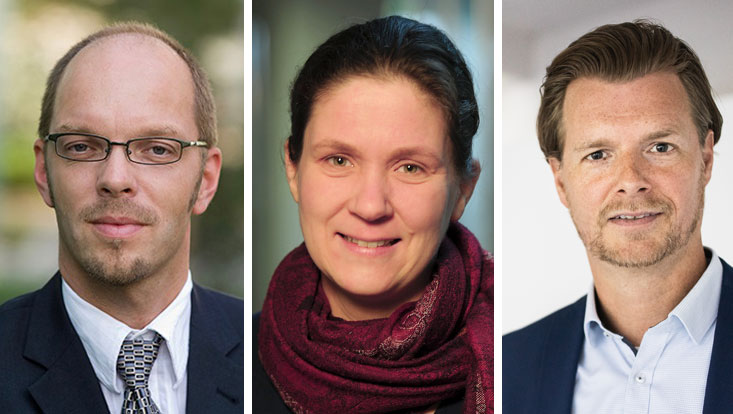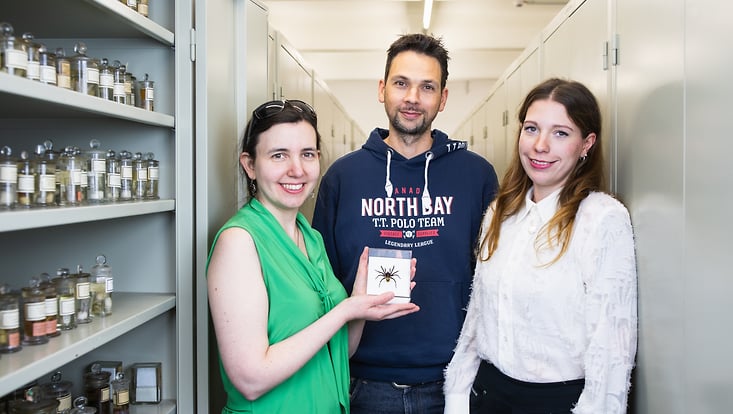Funding over €1.3 millionResearchers at Universität Hamburg Involved in 3 New Horizon Europe Projects
7 September 2023, by Heiko Fuchs/Anna Priebe

Photo: UHH/Schnabel/CEN/Esfandiari
Three Universität Hamburg researchers successful the Horizon Europe research program. Prof. Dr. Johanna Baehr, Prof. Dr. Roman Schnabel, Prof. Dr. Frank Steinicke, and their teams have subprojects involved in 3 collaborations funded by the European Union.
Horizon Europe is the ninth research program from the European Union that aims to construct a knowledge and innovation-based society and a competitive economy while also contributing to sustainable development.
EXPECT: Towards an Integrated Capability to Explain and Predict Regional Climate Changes
Record heat, rains, and snow storms: the weather is already starting to change markedly in many regions of the world. Climate change means these weather extremes will only get worse. To properly prepare for these events, we need precise productions, which are not always possible with current simulations. This is where the EXPECT project comes in. A combination of the most recent climate simulations, the most current satellite images of the earth and machine learning should identify the ways how physical processes are influencing regional climate changes. The project focuses predominantly on previously insufficiently researched areas, such as atmospheric circulation and the interaction between the land surface and the atmosphere. “This approach will give us not only predictions for the coming year, but also allow for developments over many years,” explains Prof. Dr. Johanna Baehr, professor for climate modeling in the Department of Earth System Sciences. Working in the Cluster of Excellence Climate, Climatic Change, and Society (CLICCS), she and her team are focusing on methods of better combining measurements and climate simulations, particularly using machine learning methods.
A total of 16 international project partners will work on the Expect over its 48 month span. The project has a total budget of €8 million and is coordinated through the Barcelona Supercomputing Center. The Hamburg subproject will receive approximately €450,000.
QUANTIFY
The QUANTIFY project is concentrated on the use of quantum-enhanced technologies in photonic integrated sensors to expand on their performance and application in meterology. The application of quantum technologies is intended to glean relevant information beyond the application of traditional sensors, to improve their sensitivity, and reduce uncertainty. The focus in this is the integration of a range of photonic platforms and new hybrid techniques onto the same chip. This project is striving to develop a photonic integrated squeezed light source, an important step for realizing a universal quantum computer. “QUANTIFY aims to bring photonic quantum-enhanced sensors to the next level of integration by developing the essential building blocks and novel quantum-enhanced techniques for future chip-scale optical clocks, optically pumped magnetometers, and optomechanical temperature sensors,” explains Prof. Dr. Roman Schnabel from the Department of Physics who also researches with the Cluster of Excellence CUI: Advanced Imaging of Matter.
A total of 12 international project partners will work on the QUANTIFY over its 42 month span. The project has a total budget of €4 million and is coordinated by the Italian research institution Instituto Nazionale di Ricerca Metrologica (INRiM). The Hamburg subproject will receive approximately €150,000.
PRESENCE: a toolset for hyper-realistic and XR-based human-human and human-machine interactions
The PRESENSE project deals with creating realistic experience in how extended reality (XR) can be integrated into real and virtual environments as well as human-computer interactions. The idea is based on a range of dimensions of perception, such as the plausibility illusion (the illusion that virtual experiences are actually real), co-presence (the illusion of being with other people), or place illusion (the feeling of being present in a place). “The availability and performance of current technologies is not sufficient to achieve a high degree of XR presence. This is however, essential to move towards achieving virtual reality, being everywhere, doing everything, working with others, from anywhere,” says Prof. Dr. Frank Steinicke from the Department of Informatics whose group is taking on the role of technical coordination for the project. That is why the Presence project concentrates on 3 main problems: creating realistic visual interactions between people in different locations, making realistic contact between remote users and synthetic objects, and the creation of realistic social interactions between people and computer-generated AI agents.
The PRESENCE projects combines 17 international project partners, and will operate for 36 months with a total budget of €8.5 million, and is coordinated by the Spanish internet research center Fundacio privada i2CAT. The Hamburg subproject will receive €745,625.


